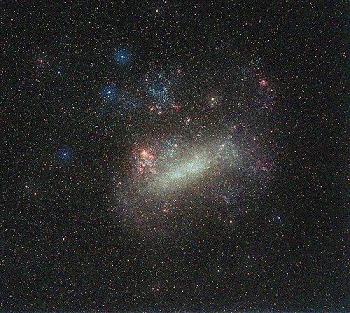New theories attempt to explain why the Large Magellanic Cloud contains two populations of stars in globular clusters separated by an age difference of 10 billion years
Alon Zeevi, Israel Astronomical Society

Since the early days of intensive research about the natural satellite of the Milky Way galaxy, the Large Magellanic Cloud (LMC), scientists have not found a sufficient answer to the riddle of the huge age gap, 3 versus 13 billion years, found within the cloud.
The leader of the research team, Kenji Becki of the University of New South Wales in Australia, now proposes a solution that combines the gravitational interactions of the Large Cloud with the Milky Way and the Small Magellanic Cloud (SMC). During the work, computer simulations were used to simulate what is assumed to be the shared history of the two Magellanic clouds, and the results were published to the general public in the leading scientific journals.
According to astronomers, very "old" globular clusters are recorded for a time relatively close to the Big Bang when both the Milky Way Galaxy and the Large Magellanic Cloud were formed. The younger clusters, on the other hand, began to form after the exciting encounter between the two Magellanic Clouds that occurred 4 billion years ago. "Social gatherings" such as the one that happened afterwards, contributed greatly to countless fluctuations in the gas filling the LMC, thus causing a chain reaction that ended in the formation of a population of young globular star clusters - 3 billion years ago.
Another discovery by the researchers, is that the gravitational tide-tidal relations exerted on the Large Magellanic Cloud are the reason for the presence of the central strip that is so common in the images of the cloud. Another product of the gravitational forces is a large and scattered burst of old stars (the red area in the picture) that were torn from the great cloud that surrounded the Milky Way galaxy.
Translated by: Alon Zaevi

One response
Didn't they show that the difference between the ages of the stars in the cloud doesn't show another young galaxy that merged with the cloud?